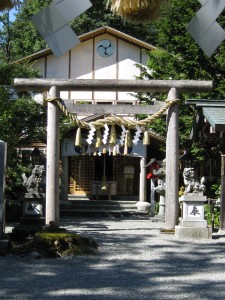
Main building
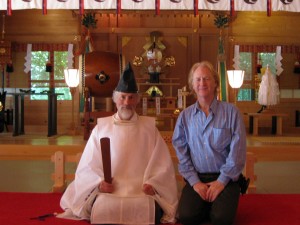
With the Rev Barrish
For years I’ve been intrigued by the Tsubaki Grand Shrine of America. Here, uniquely, is a fully-fledged Shinto shrine run by a non-Japanese priest under the auspices of Tsubaki Shrine in Mie prefecture. As you can see in the picture, it has all the conventional features of a Japanese shrine though with an original style of architecture. Shinto-style trappings abound, and only the bilingual nature of explanations betrays the location, set as it is in the depths of Washington State less than an hour by car from Seattle.
Driving down some broad country roads, one passes all of a sudden a torii. No doubt few of those who pass give the gateway much thought, but once you turn into the driveway you begin to enter something of an enchanted world, for the road curves round and down a gentle slope toward an opening that nestles in the nook of the free-flowing Pilchak River.
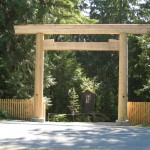
Entrance to enchantment
But how did it come to be here in the first place? It’s a question I put to the priest of the shrine, the Rev. Koichi Barrish. ‘Kamisama fushigi,’ he replied (the mystery of the kami). He first established a Kannagara Jinja here in 1992, born out of his work as a teacher of aikido, when he was offered land on which to build a shrine. After training during the 1990s at Tsubaki in Japan, he was licensed as a priest and in 2001 a decision was made to turn the Kannagara Shrine into an official branch of Tsubaki by combining it with the previously existing Tsubaki America Shrine in Stockton, California. (For more info. see the shrine website, http://www.tsubakishrine.org/)
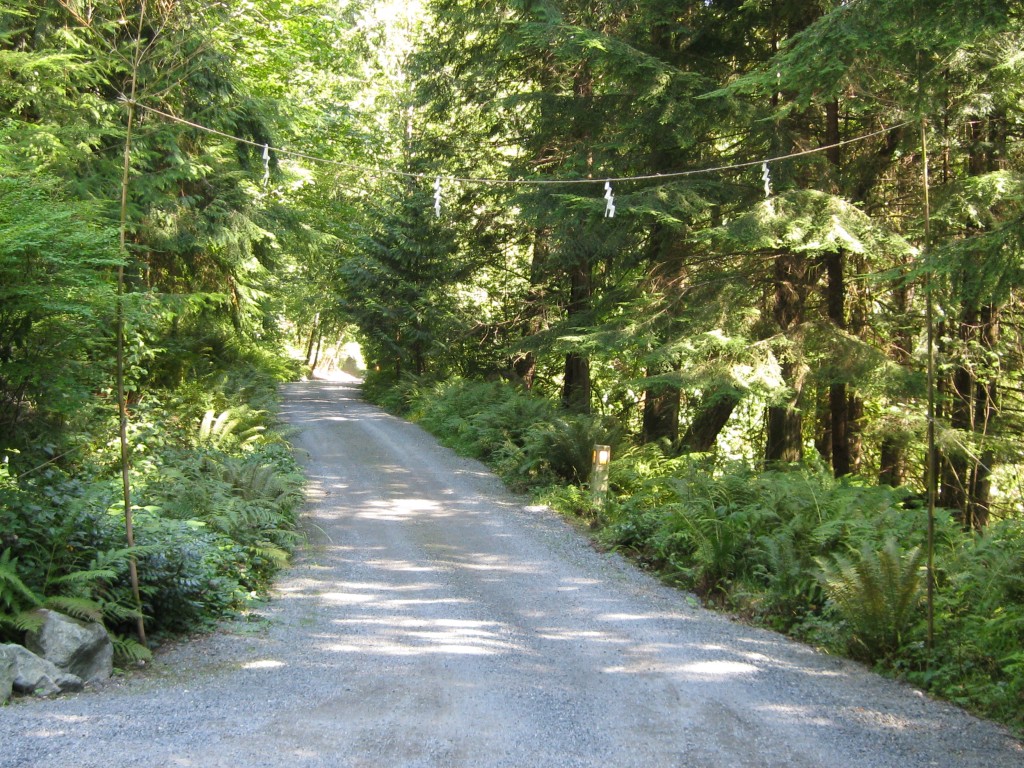
Driveway to another realm
Barrish sensei, as he is known, came to Shinto through aikido. For myself, I come to Shinto out of love for the genus loci. So it was with great delight that i found Tsubaki to truly sparkle with the spirit of place. This has much to do with the energising qualities of the river, that bends round the shrine as if in loving embrace. The waters are crystal clear and come happily spilling down from the snow-capped peaks of Mt Pilchuk, bringing with them a pure freshness that radiates health and vitality. All around the lush vegetation speaks of its life-giving nature.
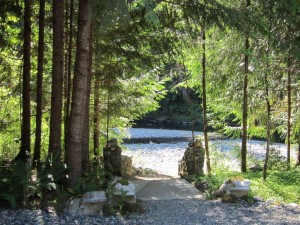
The flow of kami essence
The shrine grounds are compact, but packed into them are a wealth of interesting items. A stone lantern decorated with eto (Chinese zodiac); a sculpture of Sarutahiko (the main Tsubaki kami); an ema stand carrying votive tablets in both Japanese and English; a torii facing onto the river where misogi takes place; and a ‘happiness ball’ whose smooth stone surface you rub while praying to cleanse Shinto’s ‘six senses’. ‘If you make your best effort each day with the heart of gratitude, happiness will come naturally into your life,’ runs the optimistic message of the accompanying noticeboard.
A path runs along the riverside past a small Inari shrine to a building where Barrish sensei lived in his bachelor days, and along the way is one of the most striking shinboku (sacred trees) I’ve come across. Standing on a small promontory of its own at the bend of the river, it seems to delight in the blessings of the nature it so evidently enjoys. As Joyce Kilmer put it…..
I think I shall never see/ A poem lovely as a tree
A tree whose hungry mouth is prest/ Against the sweet earth’s flowing breast;
A tree that looks at God all day,/ And lifts her leafy arms to pray;
A tree that may in summer wear/ A nest of robins in her hair;
Upon whose bosom snow has lain;/ Who intimately lives with rain.
Poems are made by fools like me,/ But only God can make a tree.
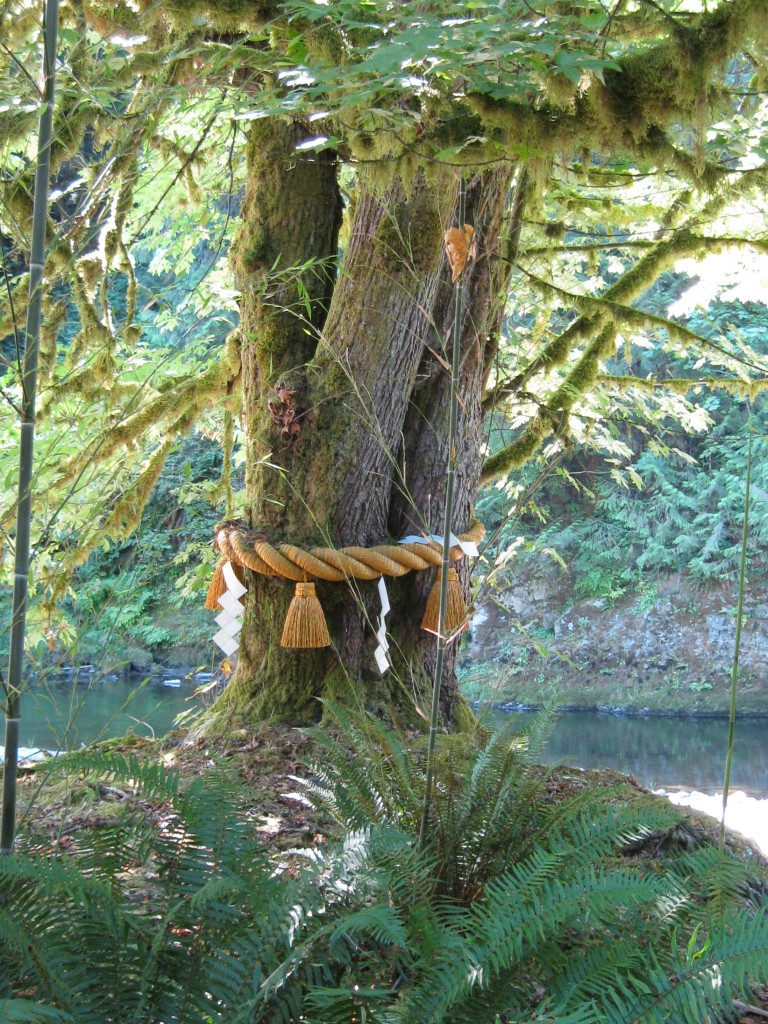
Tree of life
For Part Two of this article, please click here.

A great write-up of a very unique place. And beautiful photography. This greatly increases my desire to hop on a train or bus across the mountains to visit. I look forward to part 2.
Yes, this is a lovely description of the Tsubaki America grounds. It is hard to describe the profound peace and immersion in nature the Shrine has. It’s not that far from a town, but it feels as if it is by itself in the world.
This description, like my first visit, was from the summer. I have now visited at New Year, and it is just as special a place in the winter. The winter cold does not mute the life and energy of the Shrine.
I visited the Shrine last summer and completely missed the Inari shrine. It’s worth the finding, as it’s a beautiful, peaceful spot, surrounded by the sound of the forest and the river.
Thanks, Lou, for the update and the winter description… I’m glad you enjoyed the peace and look forward to your further input.